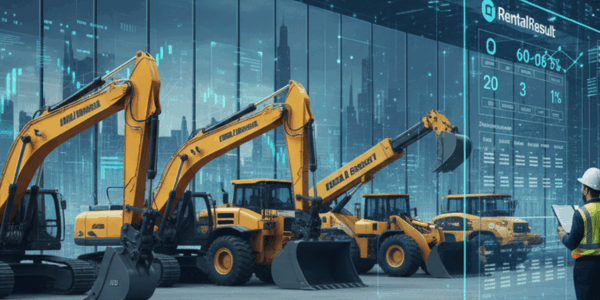
Construction equipment management requires real-time visibility and tracking of all of your equipment and tools–the very foundation for profitable construction jobs. Regardless of how you bid the job, you need to accurately track costs, mobilize assets, measure utilization and be able to charge back costs to that specific job site or task.
Equipment rental companies know a thing or two about managing assets that construction equipment managers might find useful. Specifically, the software they use to track their rental assets could be successfully used to help you better manage your equipment and accurately track costs. We outline a few ways these tactics can be implemented into your construction equipment management process for better visibility and profitability.
Calculate Internal Charges for Equipment Use
Every job site, project or task can have its own internal or external charging information. For example, you may have a standard internal rate for an excavator, but due to the remoteness of a location or the density of projects in a particular region, you may have specific rates on some job sites. Rates can be controlled based on a range of variables: including hours, days, weeks, months, excess hours, or duration required. The costs can then be internally billed to the project and allocated to that task code.
Managing Requests and Delivering Equipment
Whether you use requisitions to trigger demand or have a central equipment desk to handle requests for the deployment and allocation of equipment, the right software can help. Each requisition can be turned into an order for equipment, tools, labor and additional services (and consumables if necessary). You can then allocate equipment to the orders and plan for dispatch. If you want to manage a full logistics process then you can create trucks and associated journeys, or get external trucking services directly from the logistics planning screens.
Logistics picking allows you to pick and allocate equipment across multiple requisitions and orders using mobile devices or tablets. This means you can pick for a specific load and truck ready to hand the load over to the driver for delivery to your job sites. Once your equipment is delivered to the job site, it can be signed for by mobile device and the charge period will then begin. Charges or invoices can be produced on a regular cycle which might be daily, weekly, monthly, or any other variable you wish to use.
Managing Pickups and Returns
Job sites have visibility of everything they currently have on-site. They can use their job site portal to review and to request pick up of equipment they no longer need. They can also notify you directly of any issues with equipment and request on-site maintenance or exchanges /swap-outs. All of these requests drop straight back into your internal control center so that you can prioritize and manage your work load. From there you can assign trucks for pick up, track the pickup process (including mobile apps for signature capture) and finally return the equipment back to your yard.
In instances where you don’t want to return the equipment, but want to move it straight to another job site you can do that within the software without losing any visibility and utilization data as well as capturing any transport and related costs.
Equipment Maintenance
Equipment rental software is set up to help owners provide regular maintenance and inspections of their equipment. The software can manage this process for you: tracking service requirements and checklists; triggering service due information based on asset status, utilization, machine hours, time and workflow. You can manage workshop orders and inspections through the main screens or use mobile apps for on-site maintenance activities. Get a comprehensive view of your assets by status and events both due and overdue.
Measure your Equipment Utilization
Every time a piece of equipment is used on the job site it can be tracked. You can measure the time and effective dollar utilization of your equipment to determine how profitable that piece of equipment is. Underutilized assets might be better to rent than own. You can also use the software to track bulk items like scaffolding. You can track the costs of bulk purchases, depreciate against them and measure utilization of bulk equipment.
These are just a few of the ways that you can use the same software designed for equipment rental companies to help you manage your equipment. The end game is the same for both business models – to improve asset management and return on investment. If you would like to learn more about how Wynne can help you manage your assets paperlessly, give us a call. Or check out our free e-book with best practices for asset management gathered from the leading construction companies we work with.




